
Should you disrupt or create a category? 5 lessons from Gainsight’s CMO Anthony Kennada
If you want to build a massive business, you could do a lot worse than trying to create a brand new business category.
But it can be a real challenge knowing that’s what you’re doing from the outset. In late 2007, a pair of roommates found themselves scraping their wallets to come up with enough cash to cover their exorbitant San Francisco rent. They noticed that a big design conference was coming to town, and all the hotels were booked. That’s when they came up with a brilliant idea – selling airbeds on their apartment floor for $80 a night.
Their names were Brian Chesky and Joe Gebbia, and they had just started Airbnb. They didn’t know it at the time, but they had also created an entire business category: an on demand, short-term rental marketplace, which has shot the value of their business north of $38 billion.
As the likes of Airbnb, Uber and Apple have found, creating an entirely new category can be a lucrative business. A study by HBR found that the 13 companies in the Fortune 100 that were instrumental in creating their categories accounted for 53% of incremental revenue growth and 74% of incremental market cap growth.
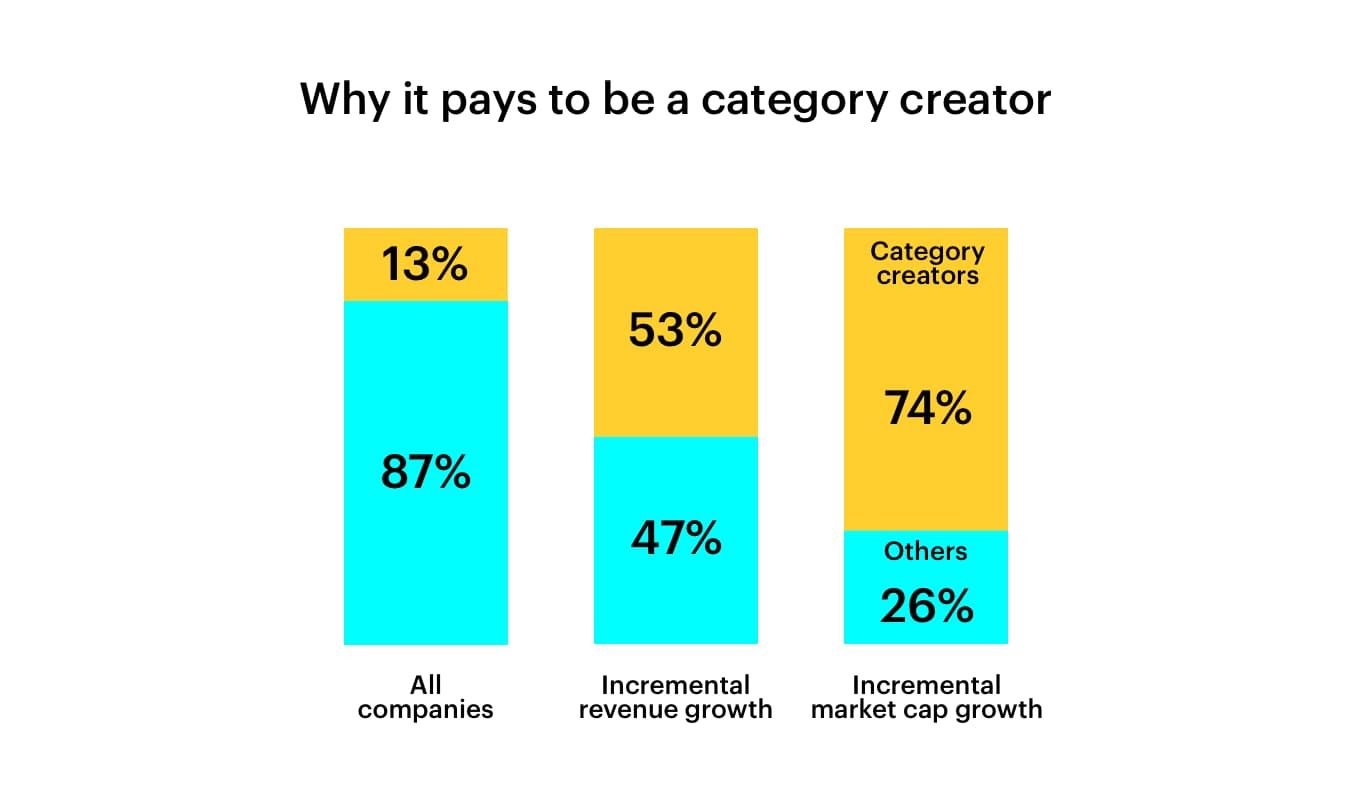
However, such a valuable reward doesn’t come easily, otherwise everyone would be doing it. For every Airbnb there’s a Segway or Google Glass, very fresh technology that never actually found a category to create. Prospective customers have to be educated. Investors might not get it. There isn’t a canon of resources that can provide you with a tried-and-true strategy to deploy. In a world where 47% of first-movers fail, creating a category is a risky business.
Anthony Kennada, the Chief Marketing Officer at Gainsight, has helped navigate these tricky waters and put the Customer Success category on the map. Customer Success was barely a discipline when Anthony joined Gainsight, but thanks to the rise of SaaS and subscription-based business models more generally, where retaining and providing value to your existing customers is a non-negotiable, the category has exploded.
Over the past four years, the number of Customer Success Managers (CSMs) in the industry has increased 400%. So too has Gainsight’s revenue. Over the past few years, Gainsight has grown its revenue more than 1,000% and increased its customer base with brands such as Adobe and Workday. The road to becoming a category king may not be easy, but the payoff is real.
If you’d like to hear more about how you too can create a category (and when it’s better to enter a crowded marketplace), you can listen to our full conversation above, or read Anthony’s insights below.
This is episode six of Scale, a brand new podcast series on moving from startup to scale up. If you enjoy the conversation and don’t want to miss the rest of the series, just hit subscribe on iTunes, stream on Spotify, Stitcher, or grab the RSS feed in your player of choice.
Focus on people, not just product
Why do most startups fail? Is it a lack of cashflow, technological limitations or disharmony on the team? No, 42% of startups fail because they didn’t solve a market need.
Herein lies the challenge for any category creator: no pre-existing market exists. When you’re not trying to topple an established incumbent or enter a crowded and competitive market, a lot of what you have to go is based on assumptions you’ve made about the need for your product. Customers may not know even know what they need – or at least they lack the language to describe the issues they’re trying to overcome.
The trick is to think from the outside in – rather than try to build a product and find a market to sell it to, you need to find a demographic and a customer that no other company is serving and then champion them. Once you’ve figured that out, the software will naturally follow.
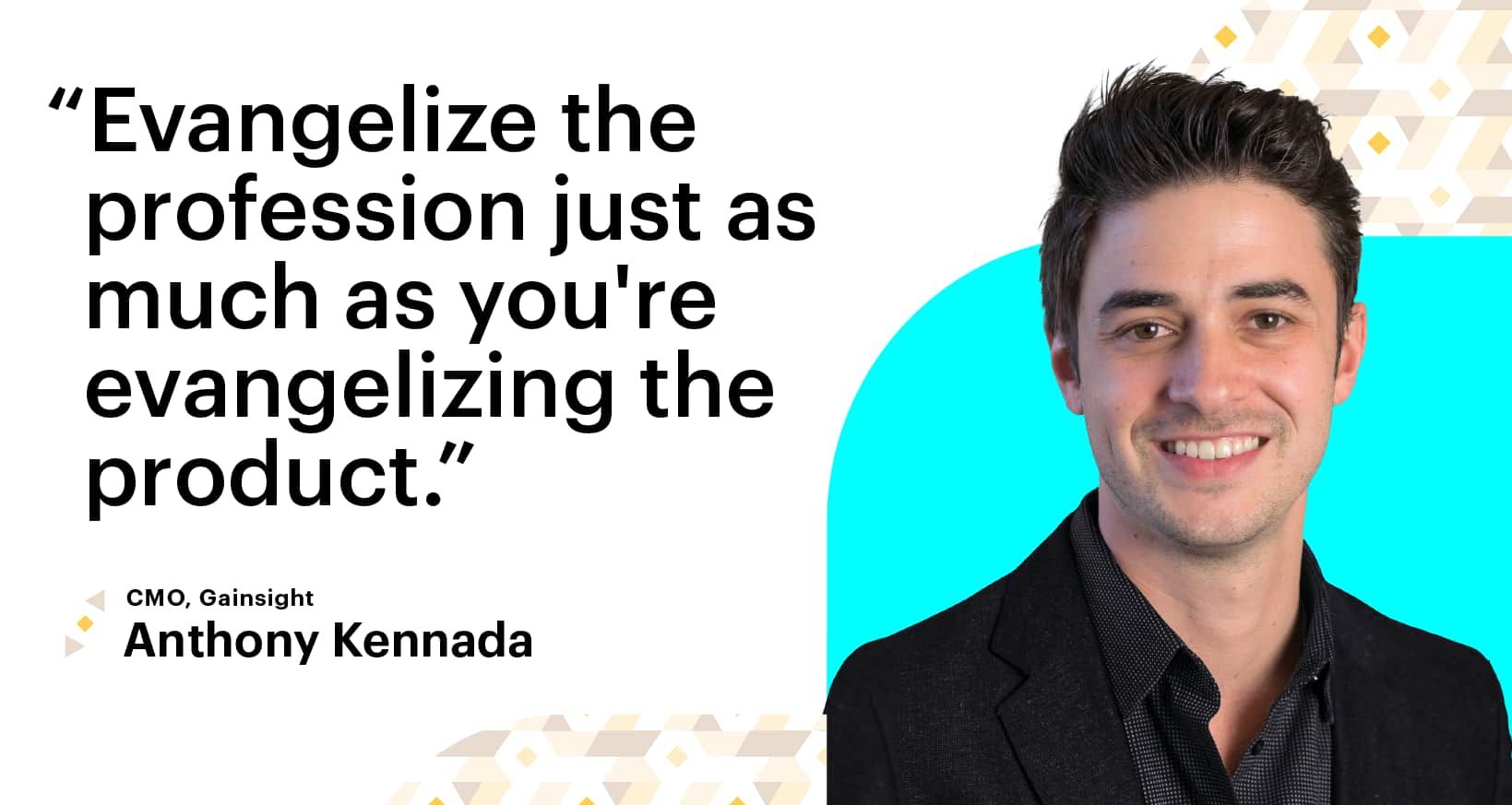
For Anthony, the key is staying laser focused on the human whose problem your business is looking to solve:
“When you make it not about yourself and your products and technology, and you make it all about the jobs-to-be-done, you build pretty strong resonance with that marketplace, whether it’s customers or prospects. So how can we do more of that? Maybe we build the blog very similar to the Inside Intercom blog – all about how to be great in your job, how to self-actualize, how to get promoted, how to deliver great products.
“In that same spirit, I think that that we wanted to do the same for the customer success industry, webinars, all that sort of stuff, building kind of a partner ecosystem around us. Who else is thinking about this stuff?”
The benefits of inexperience
It would have been easy for Richard Branson to feel overwhelmed and out of his depth when he started a print magazine as a 16-year-old. Or a mail-order record company at 20. Or an airline at 34. But Branson actually views his inexperience in those sectors as one of his biggest assets.
That’s because when you’re in uncharted territory, there are no rules. And though that can be a terrifying prospect to some, it offers the chance to make huge leaps others miss because they’re constrained by “best” practices and traditional industry standards.
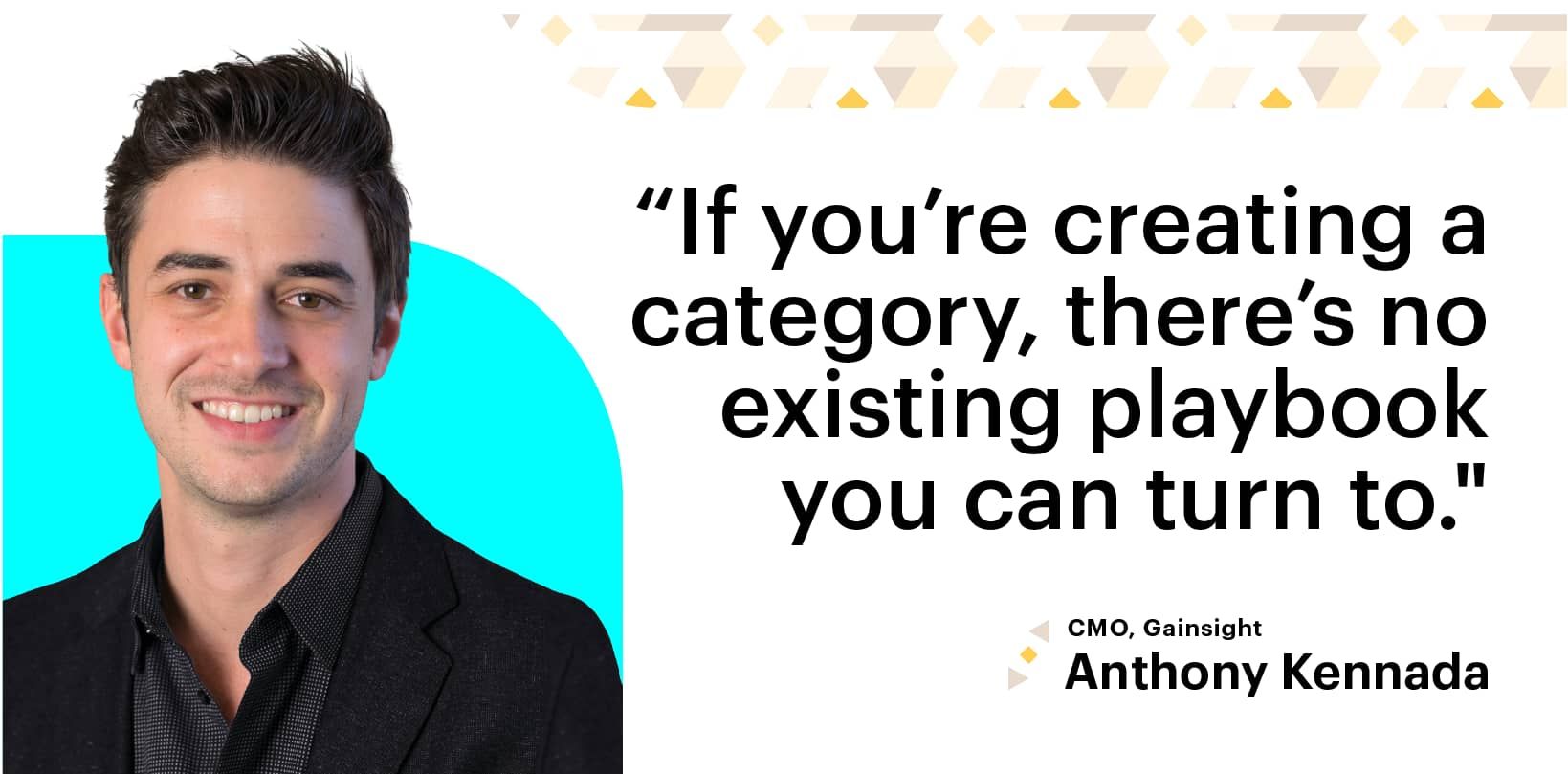
When Gainsight CEO Nick Mehta asked Anthony to run marketing, Anthony he was jumping in at the deep end. Though he had experience in recruiting, sales and product, marketing was new ground for him. But it also gave him an edge: he wasn’t carrying the baggage of conventional tactics, and he had the opportunity to explore alternatives.
“There’s a temptation to come in and say, ‘We need to run down the gamut of traditional tactics, like getting our outbound SDR team calling.’ In the early days, if an outbound call [asked], ‘Who runs customer success for you?’ They would have been like: ‘What is customer success? Who are you? Why are you calling me?’
“So the traditional tactics wouldn’t have really worked. But I’m pretty fortunate our CEO, Nick, is an inspirational leader. We made a lot of these bets kind of hand-in-hand in trying to figure out what would work and what didn’t. I don’t know what would’ve happened had I had tenured marketing experience coming in, running my playbook or whatever. It may not have worked out quite this way.”
Don’t just create the category, lead the category
It’s not uncommon for innovators to get skunked by the competition.
It happened to Nikola Tesla when Thomas Edison came on the scene and stole the show. Xerox is now a footnote in Steve Jobs’ pioneering of the personal computer. And Blockbuster was outfoxed by Netflix, which was on a fast track to dominate movie rentals even before it became a category-creator by pivoting to streaming and finished off the video brick-and-mortar for good.
The work isn’t done simply because you had a good idea for something that was missing from the market. Imitators will quickly follow. If you’re a trailblazer, it’s essential to continue innovating so that you stay ahead of the chasing pack.
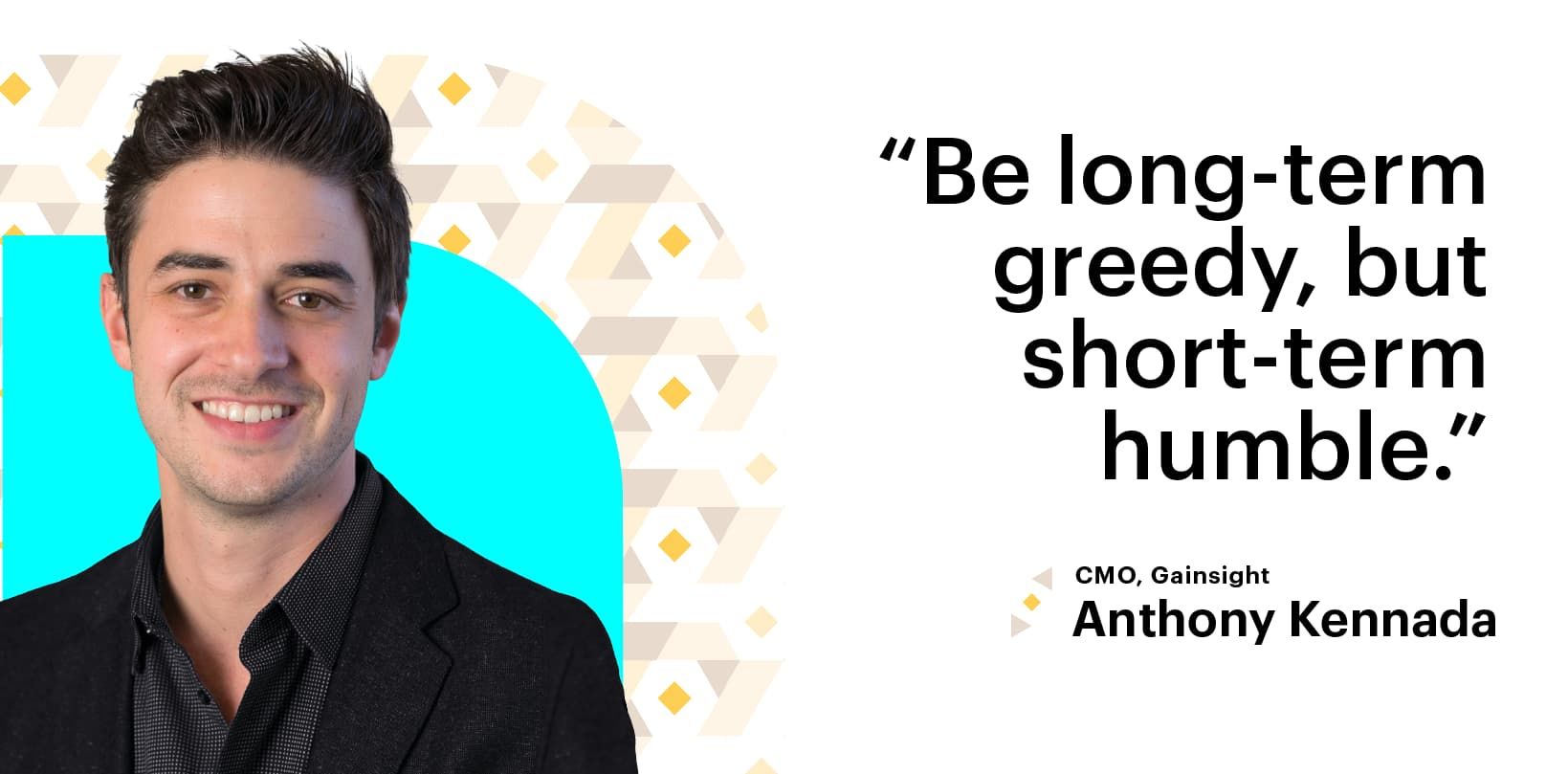
For Anthony and Gainsight, leading the category meant literally writing the book on customer success, educating the industry on the importance of the role, and tracking the growth of the space:
“It’s important to evangelize the profession just as much as you’re evangelizing the product. That’s where things like books, speaking at sales kickoffs, and even hiring evangelists internally can help scale some of your content efforts. I like the idea of being long-term greedy, but short-term humble.
“Planning around this stuff is really, really hard, but know that you’re building something great and sort of keep focused on that big picture. For us, that big picture is a LinkedIn chart that shows the growth in the customer success profession year on year growing in triple digit percentages every year. It’s now over 32,000 folks that hold the title Customer Success Manager, globally. It’s the fastest-growing job in Australia and number three, I believe, in the States. That’s the sort of long term ambition that keeps you engaged, keeps you in the game. That’s the unique part of creating a category that is pretty fulfilling.”
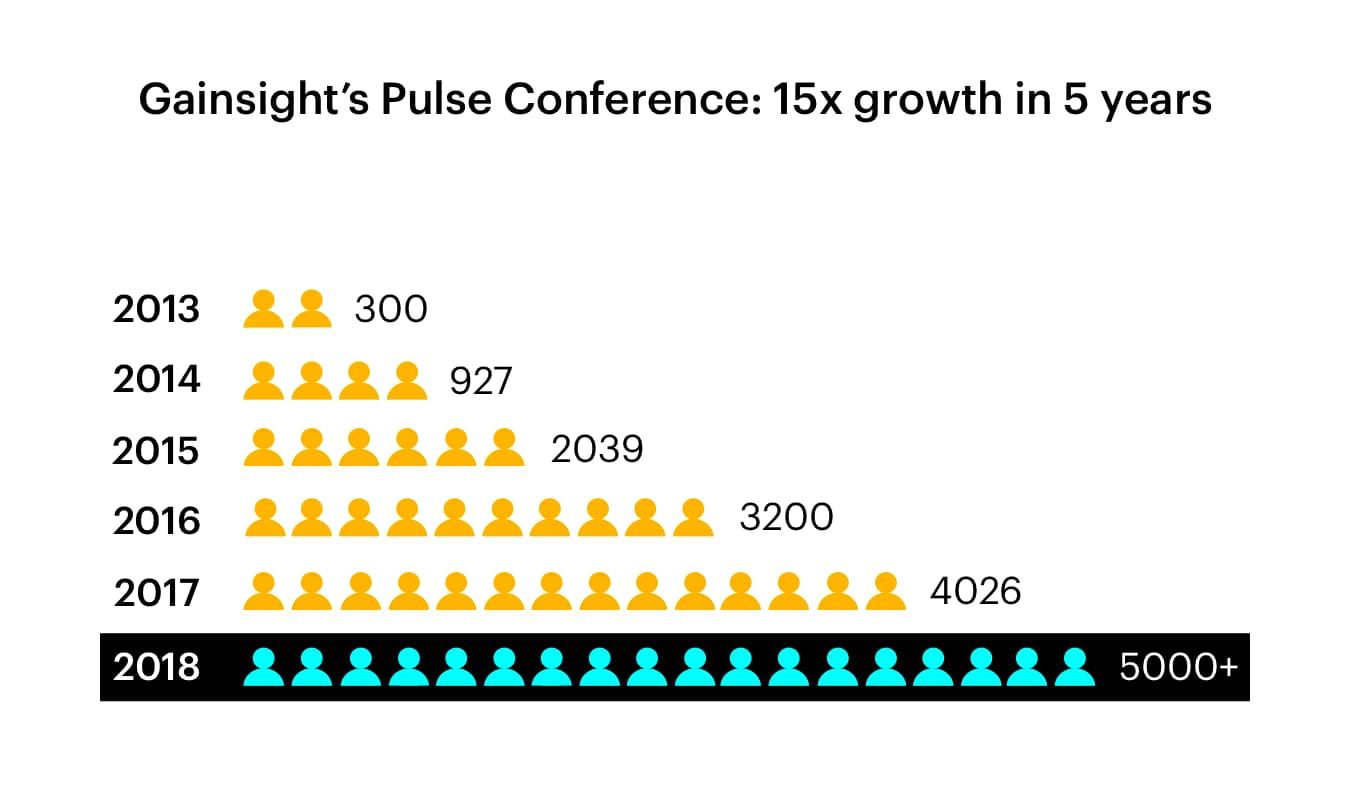
Gainsight’s Pulse Conference attendees yearly growth
Win their hearts first, and then their budgets
When the line item for your service doesn’t even exist in a prospective customer’s budget, your primary task is to educate. You have to hook them with your product and show them how it has the potential to radically change the way they work for the better.
To do this effectively, you might have to introduce mental models that sell them a new way of thinking. Beth Comstock, former CMO at GE, summed it up as “mindshare before marketshare.” And Apple’s famous “think different” mantra was about much more than product; it was about changing the way people saw the world, and even themselves.
Tell your story. Why did you think this was a problem to begin with, and how did you solve it? Identify the friction that might be keeping a potential buyer from adopting your product. Reframe the status quo and explain how it could look different — and better — in the future. Once the problem is real, present the solution on a platter. Then they’ll be ready to spend.
Anthony and his team focused on educating through conferences and books:
“We can’t unseat the person that was there before; it wasn’t even a thing. We were trying to get them to add the row in the budget. And so to do that, what we found is people came to the conference, they might have read the book. They loved that one webinar. So we won their hearts, but we couldn’t win their minds because they weren’t empowered to actually buy.
“There’s still a lot of figuring out to do. So what we started doing was trying to find ways to teach them how to buy. And so we created things like a RFP guide, which was typically like a late stage content asset, something locked away for a sales rep to use.
“We evangelized that. We put it at the top of the funnel. We promoted it quite heavily. We did things like a customer success technology buyer’s guide for evaluating players in the space, very biased. We’re the ones that wrote it. But you know, we were trying to create some framework for how to think about procuring technology for a problem that you’ve never procured technology to solve.”
Creating a category isn’t for everyone
Nobody said creating a category was easy. It can be isolating. The rest of the industry might think you’re foolish. There aren’t existing materials that can tell you what path you should take. Metrics haven’t been established to analyze your progress. You can’t learn from the mistakes of others; you have to make your own.
You might be better off entering a crowded market that you can disrupt, like Warby Parker did when they saw an opportunity to cut out the middle man and supply stylish glasses directly to customers at a reasonable price. Maybe you’d benefit from connecting with an existing customer base you don’t have to educate or hold by the hand. Or perhaps it might be helpful to have an established set of statistics that can help you measure success. And it could be easier to compete in a validated space when you can follow an established school of thought. That way, you’re not climbing Everest blindfolded.
Bottom line: there are less challenging highways to drive. That’s why Anthony jokes that you should avoid creating a category at all costs:
“If you learn anything from today, do not create a category. This is certainly not the easy road. It’s long, and it’s painful, and it’s hard to do a lot of short-term planning around things. You look at traditional kind of funnel metrics and you can see, ‘Oh, this is the benchmark where we should be at.’ So quite honestly, I would say if you’re not creating a category, good on you. Keep going and take that disruptor playbook, challenge brands, be better, have a great brand.”
This post is part of Scale, a place where we explore how businesses are driving growth through customer relationships. Scale offers advice and guidance from support, marketing, and sales leaders who are charting new paths for their customers – and their companies.






